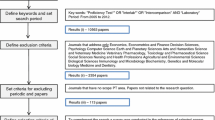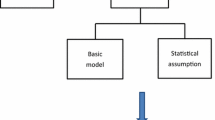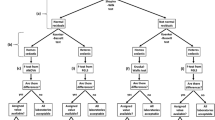Abstract
A proficiency testing programme might involve a great number of participating laboratories coming from different countries or regions, and normally they analysed the same test materials using their own routine analytical methods. Hence, the results of a proficiency testing programme may contain valuable information which could serve purposes other than just performance evaluation. This study attempted to extract information from the results of a proficiency testing programme for the purposes of educating the participating laboratories as suggested by ISO/IEC 17043. The “bias analysis” approach introduced in this study was based on the statistical model of measurement and the nature of bias in chemical analysis. With this approach, the participating laboratories could estimate the bias associated with different settings of experimental conditions according to the statistics of subset distribution of the reported results from the participating laboratories. This would be useful for them to review the analytical procedures they used and modify their methods if needed. The approach was applied to the analysis of data obtained from a number of past proficiency testing programmes, and the findings were discussed in this paper.

Similar content being viewed by others
References
ISO/IEC 17043 (2010) Conformity assessments—general requirements for proficiency testing. International Organization for Standardization (ISO), Geneva
ISO 5725-4 (1994) Basic methods for the determination of the trueness of a standard measurement method. International Organization for Standardization (ISO), Geneva
ISO 13528 (2015) Statistical methods for use in proficiency testing by interlaboratory comparisons. International Organization for Standardization (ISO), Geneva
ISO/IEC Guide 99 (2007) International vocabulary of metrology—basic and general concepts and associated terms (VIM). International Organization for Standardization, Geneva
Magnusson B, Ellison SLR (2008) Treatment of uncorrected measurement bias in uncertainty estimation for chemical measurements. Anal Bioanal Chem 390:201–213
Theodorsson E, Magnusson B, Leito I (2014) Bias in clinical chemistry. Bioanalysis 21:2855–2875
Hibbert DB (2007) Systematic errors in analytical measurement results. J Chromatogr A 1158:25–32
Johnson R (2008) Assessment of bias with emphasis on method comparison. Clin Biochem Rev 29:S37–S42
Thompson M (2000) Recent trends in inter-laboratory precision at ppb and sub-ppb concentrations in relation to fitness for purpose criteria in proficiency testing. Analyst 125:385–386
O’Keeffe M (2000) Residue analysis in food: principles and applications, vol 33. Harwood Academic Publishers, Amsterdam
Author information
Authors and Affiliations
Corresponding author
Rights and permissions
About this article
Cite this article
Wong, S.K., Yao, W.Y. Bias analysis of proficiency testing programme results. Accred Qual Assur 21, 185–189 (2016). https://doi.org/10.1007/s00769-016-1197-9
Received:
Accepted:
Published:
Issue Date:
DOI: https://doi.org/10.1007/s00769-016-1197-9




